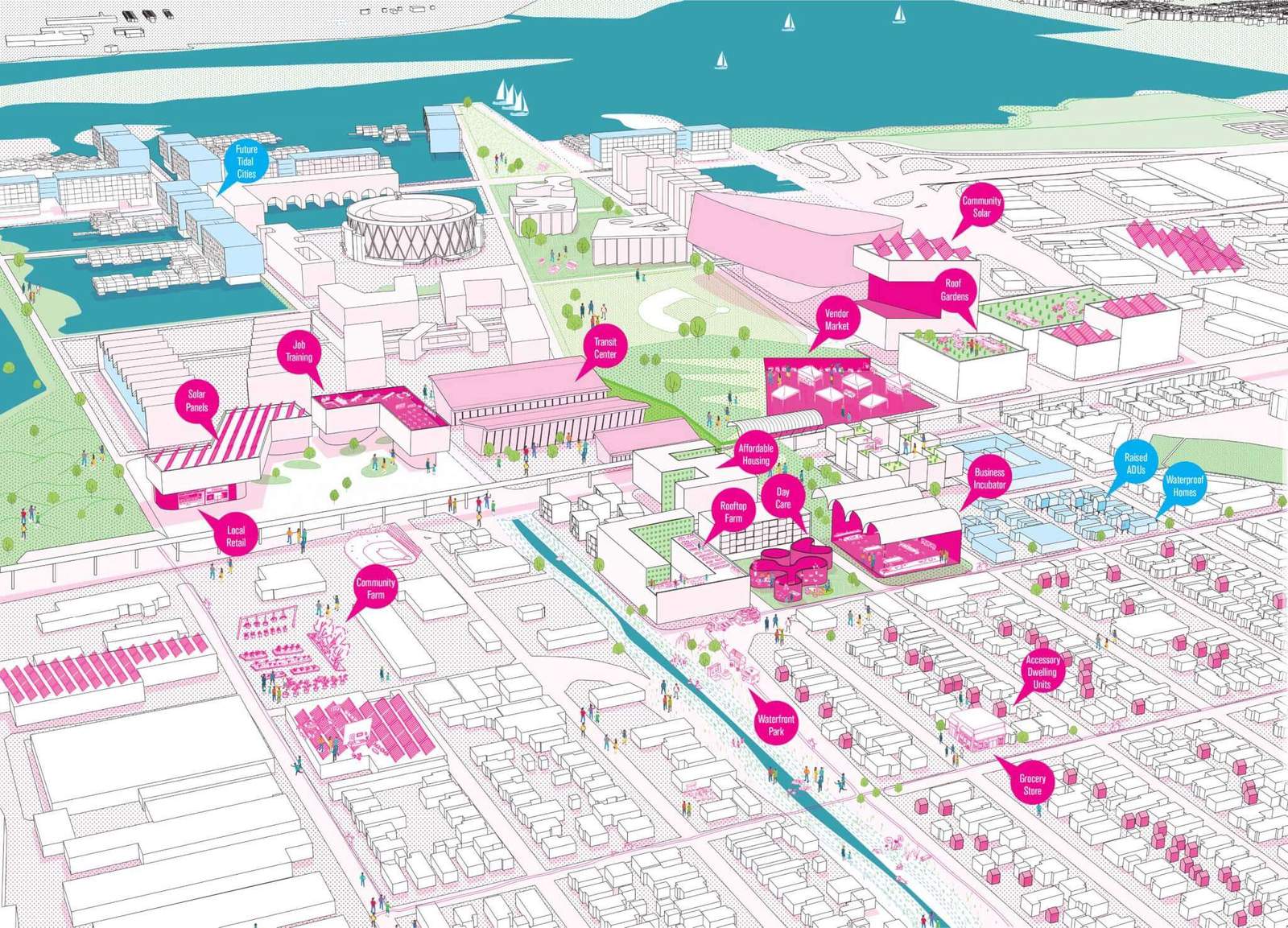Architects: Bertrand Goldberg
Year: 1964
Photographs: Flickr User: TRAFFIK [US], Bert K, Vincent Desjardins, Flickr User: moaksey, Flickr User: Vicious Bits, Zach Everson, Flickr User: reallyboring
City: Chicago
Country: United States
Marina City, designed by Bertrand Goldberg and completed in 1964, is a pioneering mixed-use development on the Chicago River. Known for its iconic “corn-cob” shaped towers, Marina City was the tallest residential project in the world at its completion. It aimed to reverse urban flight by offering a “city within a city” concept, with amenities such as a theatre, gym, swimming pool, ice rink, and private marina. The two cylindrical towers, built around a 35-foot diameter core, house 900 residential units with 360° views of Chicago. Each tower includes a spiral parking garage, and the distinctive balcony design defines its facade. Today, Marina City remains a modern architectural icon, with the complex repurposed for contemporary uses, including luxury condominiums, the House of Blues, and the Smith & Wollensky restaurant.
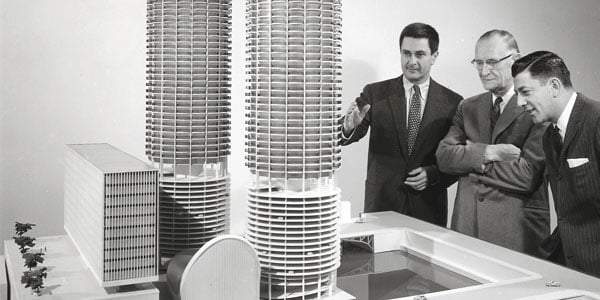
Located along the eastern branch of the Chicago River, Marina City is one of the most distinctive skyscrapers in the city, designed by Bertrand Goldberg and completed in 1964. At the time, it was the tallest residential project in the world and remains one of the densest inhabited developments. Marina City was an experiment in creating a “city within a city,” blending diverse programs into a single complex. Although it isn’t as widely recognized as the Sears Tower or John Hancock Building, Marina City’s unique “corn-cob” shape holds a significant presence in both modern architecture and Chicago’s skyline.
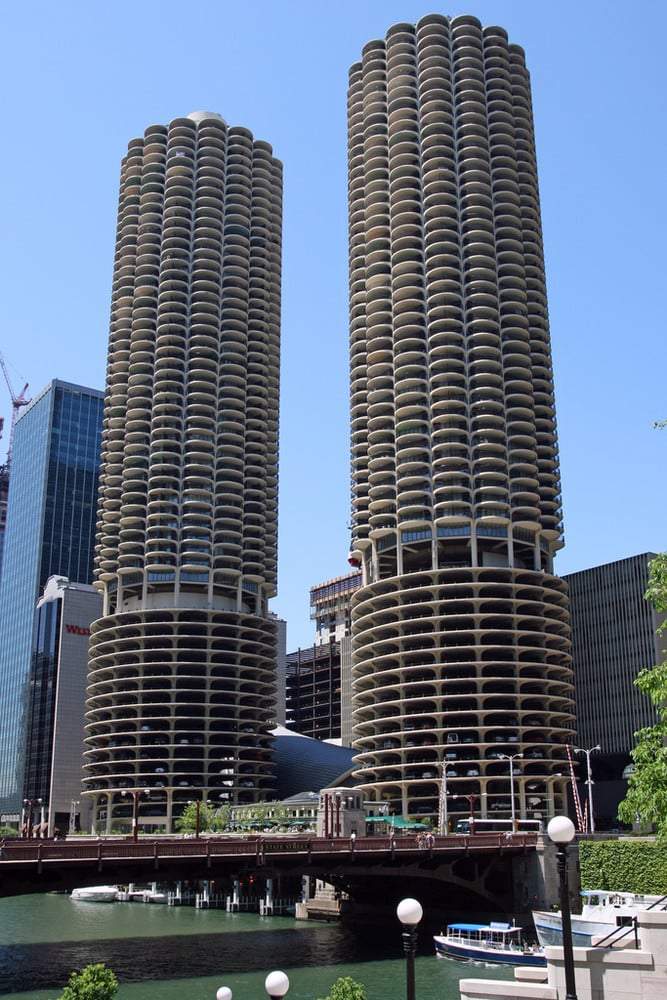

In 1959, when Bertrand Goldberg was commissioned for the project, he had little experience working on such a large scale, having primarily focused on smaller residential and institutional designs. Despite this, developer William McFetridge, president of the Building Service Employees International Union, trusted Goldberg to create a complex that would help curb Chicago’s urban exodus. By the early 1960s, many city residents were leaving for the suburbs, seeking more space and a better quality of life. Marina City was designed to counter this trend, aiming to draw people back into the city by offering a model of efficient, convenient urban living near the Loop.
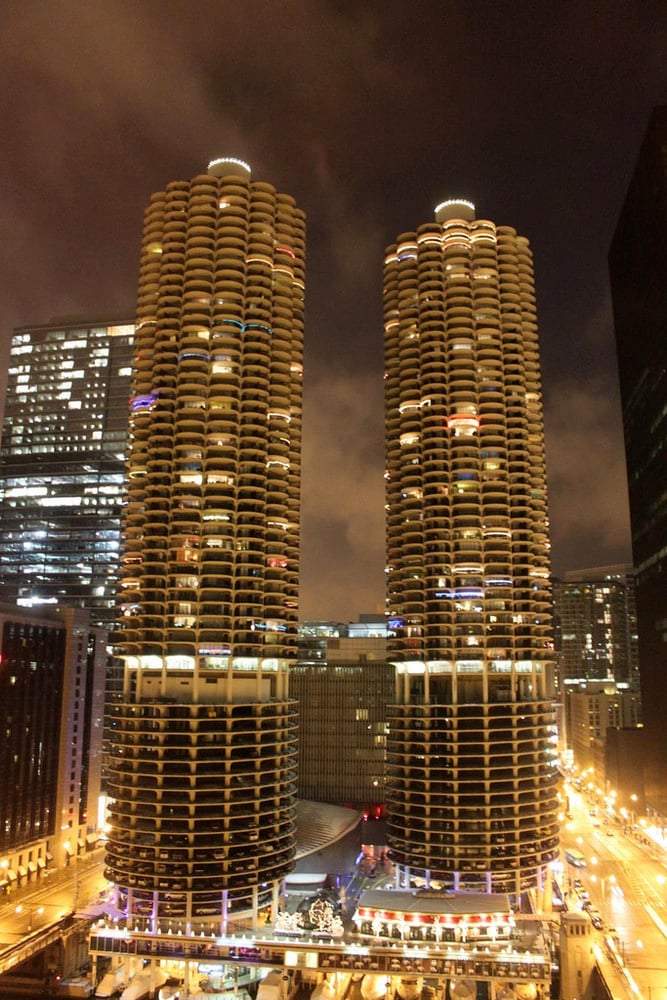

Goldberg firmly believed that people desired to live in downtown Chicago. His approach to Marina City was to create a “city within a city,” where residents could meet all their daily needs and activities within close proximity to their homes. This concept aimed to bring the convenience and amenities of suburban living into an urban environment.
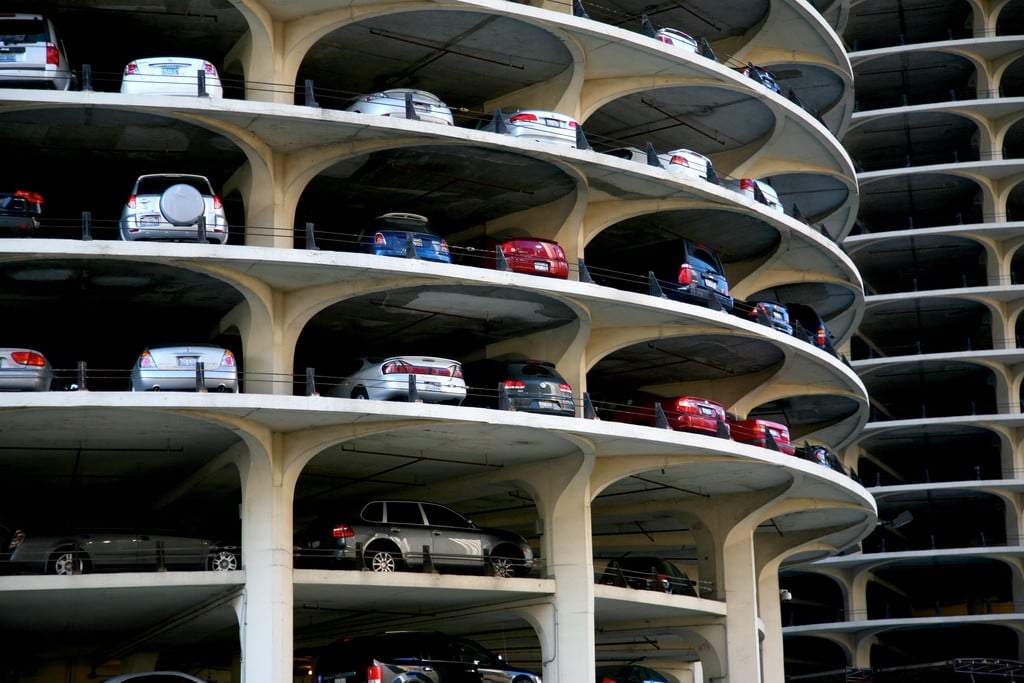

When Marina City was completed, it offered a wealth of amenities, including a theatre, gym, swimming pool, ice rink, bowling alley, stores, restaurants, and a private marina for residents. These features highlighted Goldberg’s effort to provide everything typically found in the suburbs within a compact urban setting.
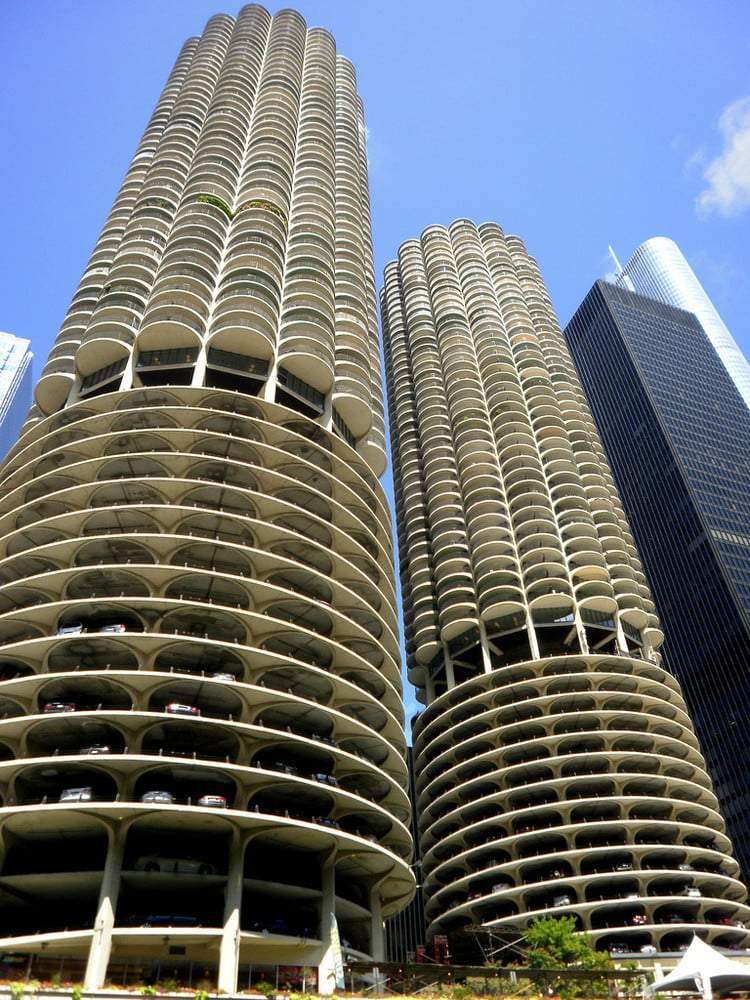

Goldberg’s design of Marina City was groundbreaking as a mixed-use residential project. Its programmatic complexity and distinctive aesthetic gave it a unique presence among Chicago’s skyscrapers. Spanning a three-acre site, the development features two cylindrical residential towers made of reinforced concrete. These towers are centered around a 35-foot diameter core, which houses the structural and vertical circulation systems, ensuring equal distribution of residential units on each floor. The cylindrical design offers 360° views of the city and also serves as a stabilizer against Chicago’s strong winds.
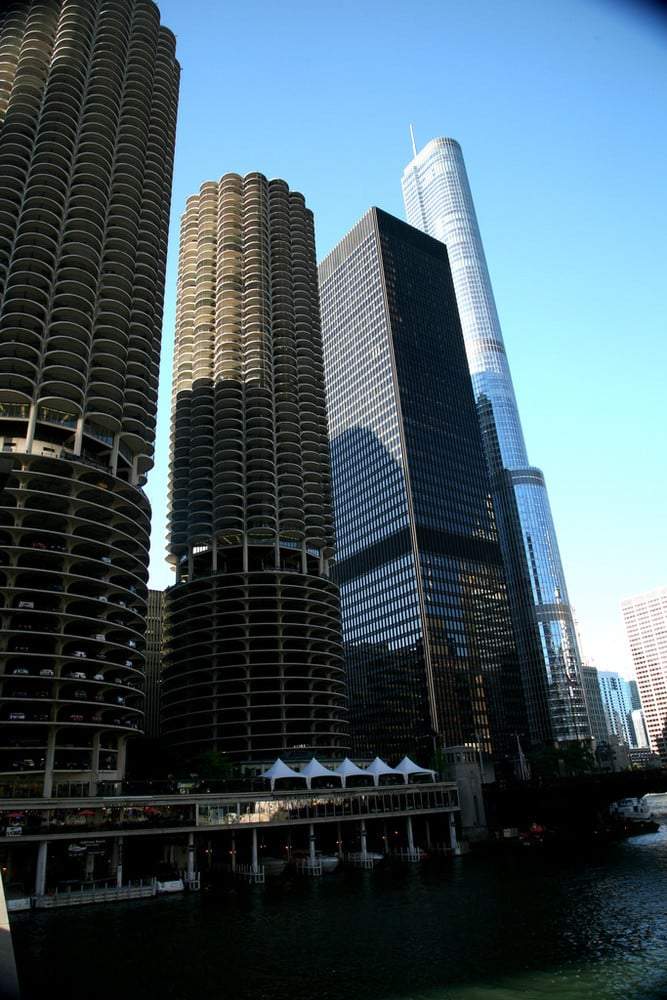

Each tower includes a spiral parking garage occupying the first nineteen floors, one of the first open-air garages ever integrated into a residential high-rise. The 20th floor serves as storage and laundry facilities for residents. Above that, the remaining forty stories contain around 450 units per tower, totaling 900 units, which include studio, one-bedroom, and two-bedroom options.
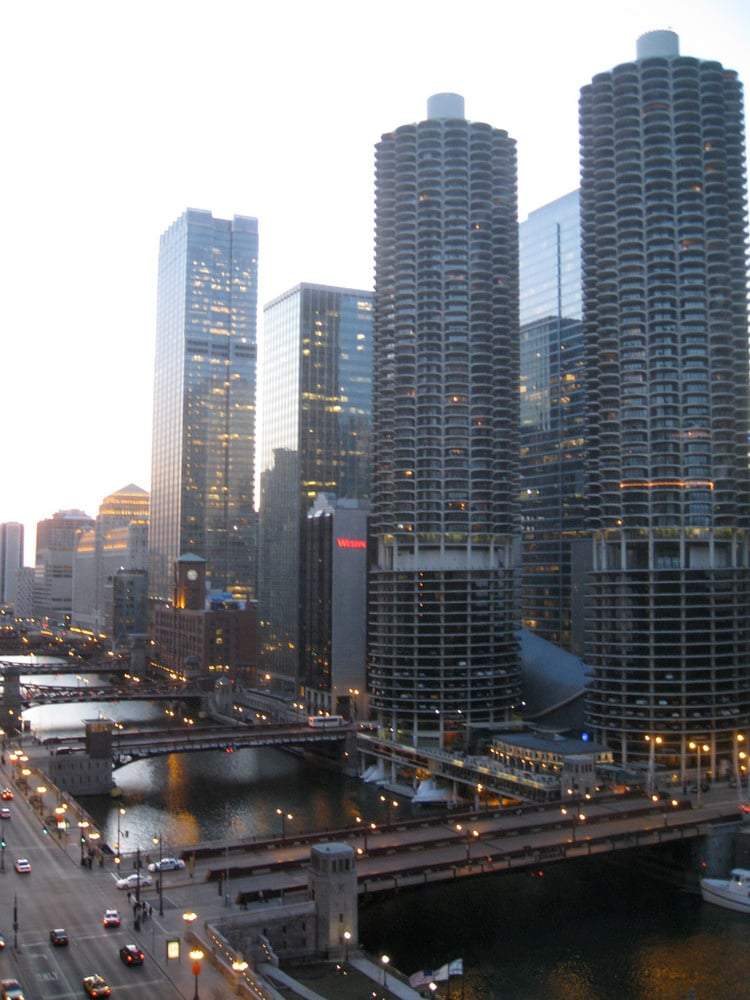

The units themselves define Marina City’s distinctive character, with each featuring a balcony that contributes to the iconic “corn-cob” aesthetic. The rhythmic façade and standardized unit design give the towers a seemingly simple form. However, each floor contains different types of dwelling units, ensuring that no two similar floors are stacked, creating an interesting spatial variation in relation to the balconies. The wedge-shaped units extend outward from the core, providing uninterrupted views of the city. Notably, there are no right angles in any of the units. This absence of sharp corners allows the interior spaces to flow smoothly from one area to another.
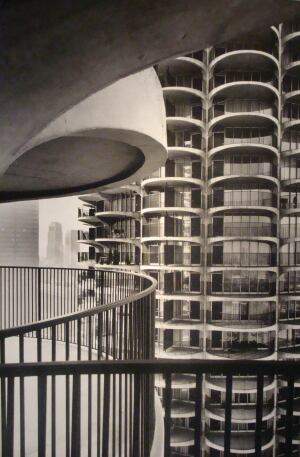

Today, Marina City retains much of its original program from its completion in 1964. The complex has been updated for contemporary uses, with the former auditorium/theatre now home to the House of Blues, the Sax Hotel adjacent to the residential towers, and an upscale restaurant, Smith & Wollensky, located above the marina. The residential units have been converted into luxury condominiums, making Marina City one of Chicago’s most sought-after addresses. As a modern architectural icon along the Chicago River, Marina City sets a precedent for cross-programming and dense urban development, while continuing to be a defining feature of the city’s skyline.


Project Gallery




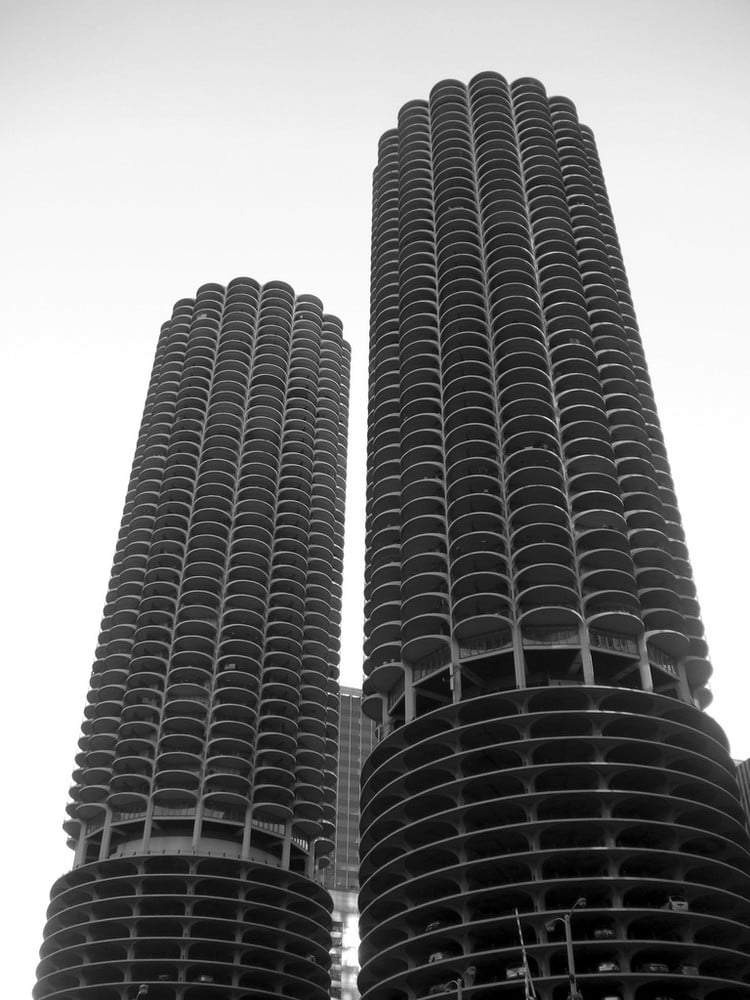



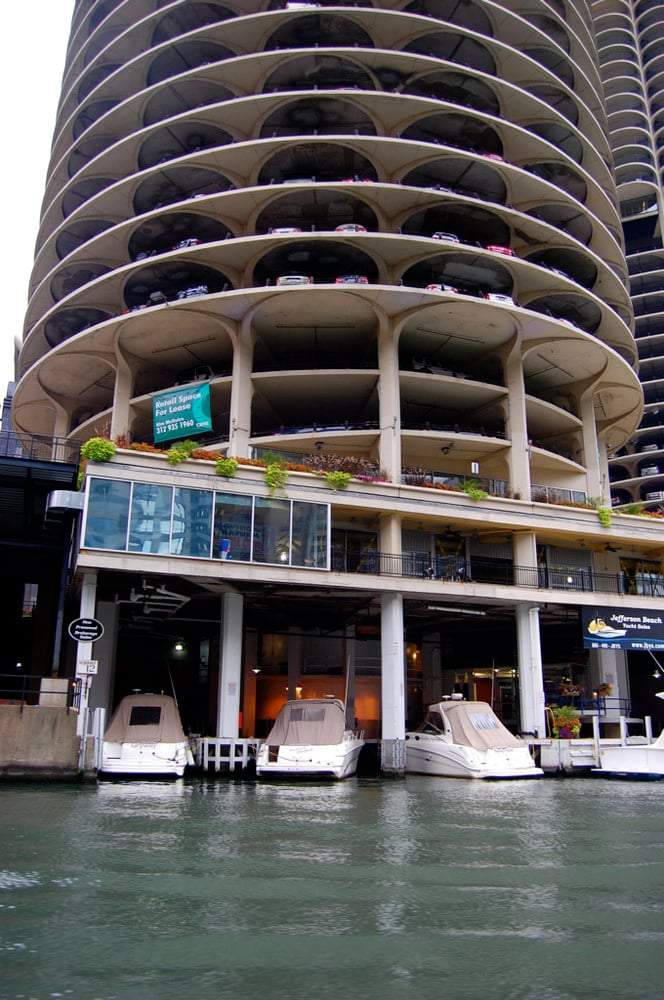















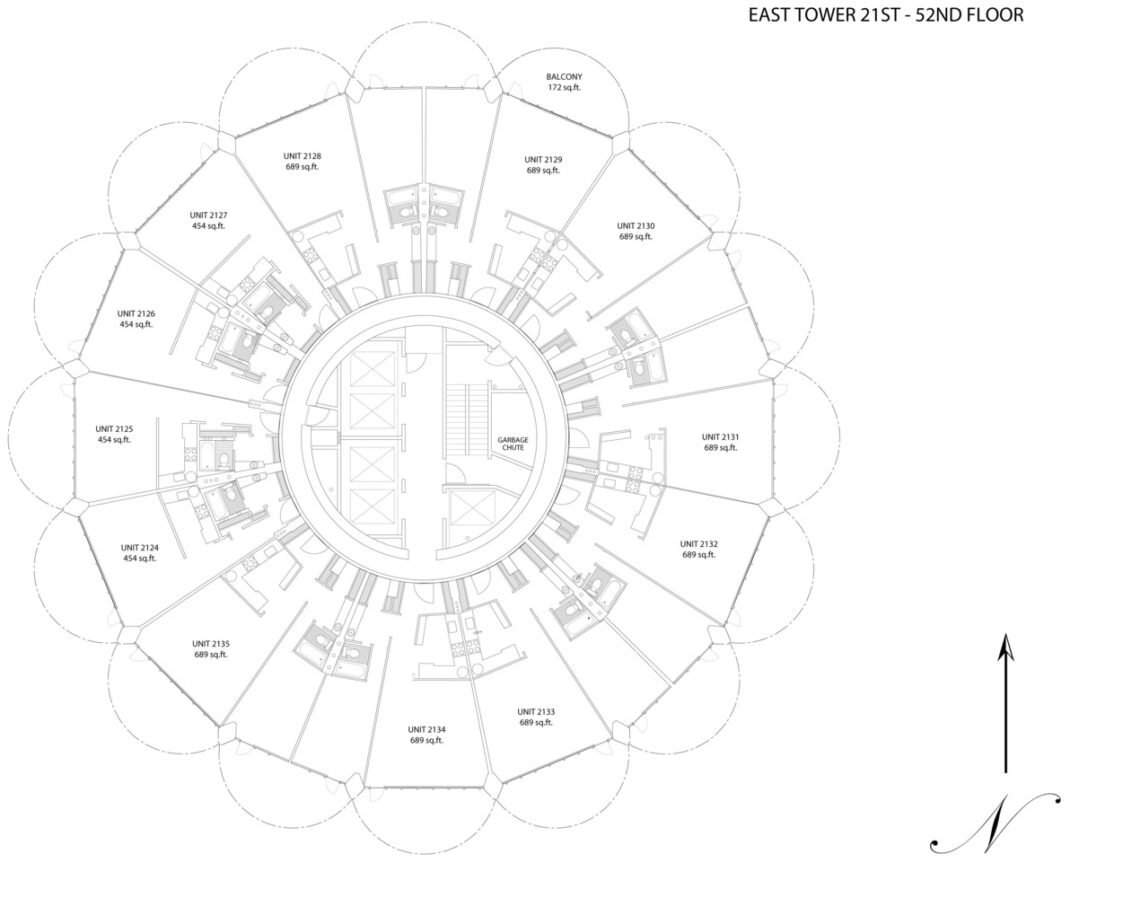

Project Location
Address: Chicago, Illinois 60654, United States
Location is for general reference and may represent a city or country, not necessarily a precise address.

